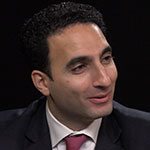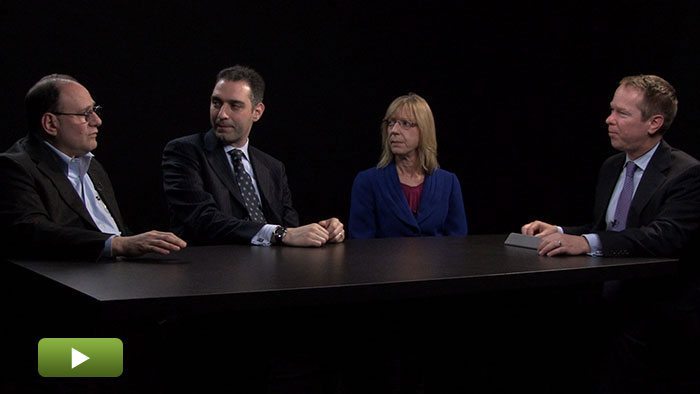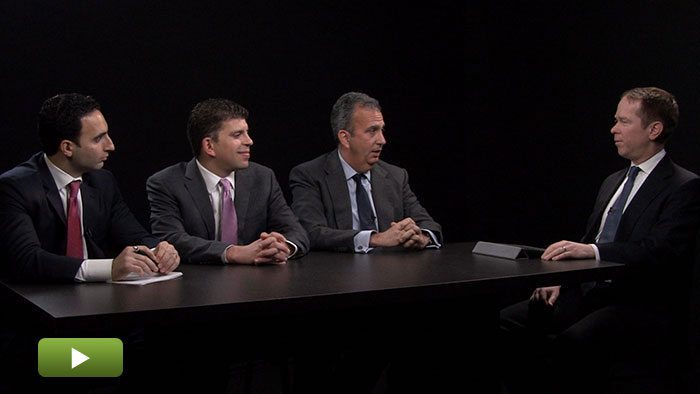Fees Outside the “Offset Paradigm”
Experts dive into a fund formation topic that has garnered much attention: fees charged by affiliates of private equity firms to portfolio companies that fall outside the traditional deal-fee arrangements. While traditional fees are usually shared with LPs, many firms charge fees to portfolio companies that fall outside these offsets. What do GPs need to know about what the market and regulators think about these non-offset arrangements?
Transcript Download Transcript
Deal Fees in the “Offset Paradigm”
Private Equity Fund Formation
David Snow, Privcap: Today, we’re joined by Raed Elkhatib of Credit Suisse Private Fund Group, Rob Blaustein of Kirkland & Ellis, and Steven Millner of Gen II Fund Services. Gentlemen, welcome to Privcap. Thanks for being here.
Today, we’re talking all about fees. It’s a big topic. There is a lot we could talk about, but I like to focus on a type of fee that is getting (for better or worse) a lot of attention in the market today. These are fees generated from the portfolio that fall outside of the traditional; you could call it the “offset paradigm.” Rob, can you walk us through what these fees are and how they are different from the fees people are most familiar with?
Rob Blaustein, Kirkland & Ellis: Sure. Obviously, when we’re talking about the offset paradigm we’re talking about fees that sponsors are receiving from prospective portfolio companies that will reduce the management fee actually paid from LPs. So…there has been a lot of press, SEC comments otherwise, about which fees are going to the sponsors that aren’t reducing these. And there [are] a couple baskets of them: the first one is firms that have some sort of value–add service provider group. Maybe it’s an operations group, maybe it’s bundling services—things that the portfolio company otherwise may or could be going outside the sponsor to provide. Secondly, there is group of semi-affiliated but not employed, not permanent, executives, operating partners and people who are brought in to add value to portfolio companies in the same way a public company might hire an independent director to come in and consult or serve as the director.
In many cases, since these aren’t employees, sponsors have traditionally not offset these fees. Then, the last basket is just a negotiated basket.
Snow: Raed, maybe you can explain to us what have been the most typical economics for how these fees find their way to the GP groups? How have they been structured in LPA and why have they gotten the attention of various people lately?
Raed Elkhatib, Credit Suisse Private Funds Group: Yes. There has been less disclosure or transparency about what these are; there is a lot of focus on what we describe, again, as the fee offset paradigm. The monitoring transaction deal closing fees that go through a waterfall, an 80/20 or today, a 100% offset to against the management fee. With these other ancillary fees, it’s less transparency about what exactly are these, what value am I getting? How do they run through the economics? Who is paying for them? One example is back to the operational point: if you have an employee who’s a full–time executive within the firm and they’re seconded to a portfolio company, to a position that exists—a CEO or CFO. If there is additional compensation for that employee and they’re still getting compensated from the funds, some investors might worry, “Am I double paying?”
Snow: Steve, talk about the need within private equity firms to resource all of these value–add functions. You’ve got the back office; you’ve got resources and people needed to help improve the portfolio companies. This is a fairly expensive undertaking, right? Have firms found it challenging to find the revenue necessary to support these endeavors?
Steve Millner, Gen II Fund Services: Well, private equity funds have certainly become much more sophisticated in how they operate internally. Part of that is the competitive landscape and the maturation of private equity. The other part has to do, frankly, with regulation. Again, if you look at a new world regulated environment, incrementally you almost always had a CFO. But now you have to have a chief compliance officer—that person may be general counsel or may be someone else. You almost always have a compliance consultant. You have your law firm much more active in working with you on an ongoing basis. In fact, one thing we saw in our survey that was interesting is when you look at the organizational costs associated with running a fund, a lot of people used to use $1 million as the cap. Now, it’s $1.5 million. And we see people breaching the cap more consistently now than ever before. So, the costs of organizing a fund have gone up.
Also, the LPs want to know: what are you bringing to the table to create value to the point we just discussed earlier in terms of the operating team? How do you create value beyond financial engineering? That’s a whole new set of costs that goes into the mix. And ultimately, someone is going to have to pay for it; there is no free ride by the LP.
Snow: Do most LPs understand and accept that a lot of the management fee is getting eaten up by these increasing back–office and compliance and regulatory costs of the private equity firm? And that there needs to be a source of revenue to support these portfolio operation endeavors? Is that generally accepted by the LP?
Blaustein: It’s funny—in many cases, these are stand–alone groups or allocations of overhead. Some of the banking–affiliated funds have done this historically, and I think it’s a question of how proactive they were about monitoring these things. And how specific the disclosure was versus whether there was generalized disclosure. So you’re seeing more and more disclosure on this.
Elkhatib: I think they do value some of these services and recognize the cost is rising. But a more direct link that fund managers can identify here is the cost and here is the associated value. That’s critical going forward. As Dave pointed out, there is a cost to all these services to generate outsized returns. And what’s becoming a more mature more competitive market—let’s just make a more direct link.
Snow: How are these types of fees being discussed in negotiations now? Is it really a matter of a need for more disclosure or are there certain terms and even caps around these kinds of fees that you’re seeing?
Blaustein: Generally, when sponsors are able to justify the fee and point to real concrete examples of how something benefitted the fund or the LPs, LPs are generally okay with it. There is still a “feeling–out” process and, in a lot of cases, you’re just looking at putting in checks and balances. So, whether there is a cap on fees, whether certain types of non-offset fees would go to the advisory committee or some of it is pre-negotiated. A lot of these operation group–type expenses were in many of the mega–funds going back a couple years, often with a cap.
Elkhatib: Something longer–term, even in the median term, you’re going to see a lot more disclosure and more transparency in LPAs. And even before that’s negotiated as to what’s actually included in the fee offset paradigm, define what those are—if it’s a monitoring fee, does it go to the waterfall or is it a separate monitoring fee? Does it go through the outside of that paradigm?
Snow: I would imagine seeing someone who is in charge of helping firms sort out the various flows of all their cash that this is becoming something LPs are very concerned about. Is the right fee going through the right, whether it’s waterfall or some other paradigm?
Millner: Basically, what you see occurring past the SEC issuing its infamous (or famous, I should say) sunshine speech is a movement on behalf of both GPs and LPs to negotiate their understanding up front—to get that into the LPA document. Ultimately, we think there’ll be reporting required. If you look at the ILPA standards today, they suggest that fees received by the advisor be disclosed to the LPs. That’s not a common practice yet.
Snow: Is it important to make a distinction between the very largest mega–firms and middle–market, smaller firms by way of these sometimes captive entities they have or affiliated entities that are providing services to the portfolio?
Blaustein: It’s possibly more common in the bigger funds. Certainly, among some of the public sponsors, they’re looking to diversify revenue streams and sources. And a lot of them are providing services to non-clients. They’re providing a much broader service, but even in the smaller, mid-market sponsors, it’s maybe not ticking every box. But you can see them having a broker/dealer that’s affiliated or a consulting arm, where it really was acquired at some point and was originally a standalone group of people who don’t want to be employees, for example.
Elkhatib: By definition, some of the larger firms have the opportunity to offer scale—things like group purchasing discounts across dozens or hundreds of portfolio companies. It’s more real and quantifiable than at, say, a mid-market firm.
Snow: But then the success of those group purchasing programs will be affiliated with a fee, some of which will end up with the GP entity.
Elkhatib: It will, so that’s where it comes down to defining to the LPs, “Here is the program, here is the cost and here is the underlying benefit to you investor in having this available to you.”







